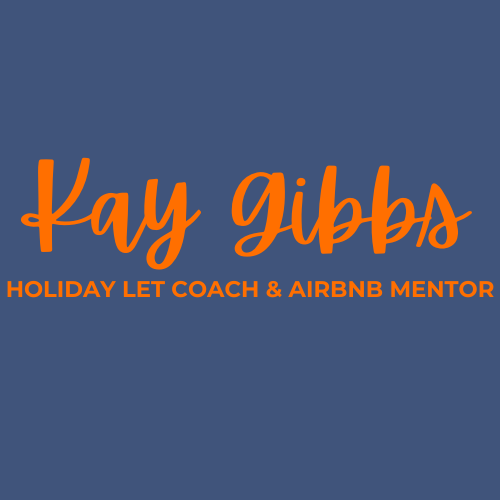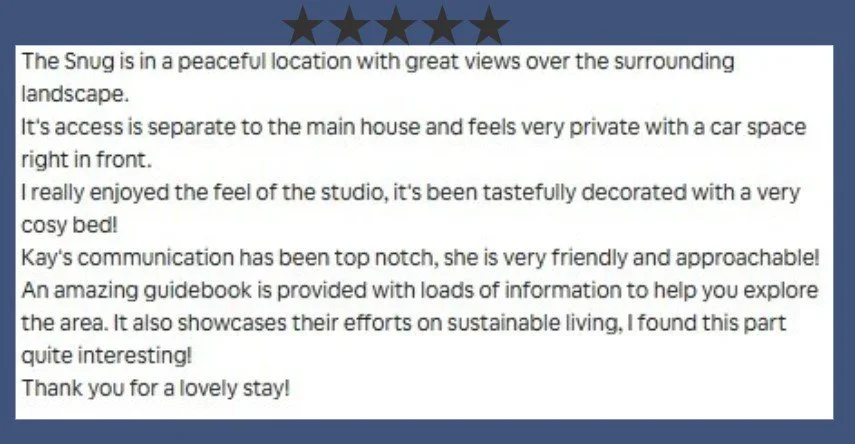Your guidebook; a marketing tool and a win for your guests’ experience
The underrated marketing tool that guests rave about.
If there’s one thing I think we, as hosts, underestimate in terms of its power to improve both their guest experience and bookings, it might well be the guidebook. It can and should be key in your marketing and guest experience.
There are infinite ways to present this info: consider your typical guest and what works for them. It doesn’t need to be flashy, it certainly doesn’t need to be paid for, but it can be incredibly effective.
Mine is printed in The Snug and sent via email before their stay. Others choose an online guide and many present something snazzy using Canva. Focus on your guest and what they would most enjoy.
When I look at reviews of The Snug, close to half of them make mention of it specifically, yet it cost me nothing. It took time to create initially, but now I just tweak it a couple of times a year and reupload it - job done.
To make a guidebook work for you, focus on these three pillars:
1️⃣ Add proper value to the guest experience
Write the guide with your guest’s mindset front and centre. Sharing hidden gems they woudn’t otherwise know about makes sure they make the most of their time with us.
If people know the best places to walk, eat, drink and generally be merry, they’re likely to be able to make the most of their stay with you and have a better time. Whether it’s a perfect for a Sunday roast or the local beach that’s great with kids, you’re helping them make the most of their time and people remember that. The reviews pictured here mention the walks specifically - at my place that’s a way we help guests to really make the most of the area.
If you’re clever about it, providing lots of info about the local area may well send some love back your way, whether that’s via collaboration or cross-promotion with local businesses, too. I send guests to a local café where they (and I!) get 10% off everything on the menu. We all win (and it’s the best ploughman’s in Dorset!).
This addition of value is something guests talk about it in the reviews. They tell their friends. They rebook. They’ll share pictures on social media.
2️⃣ Tackle common queries for a reduction in workload
My guidebook contains all the information guests need to reduce the time I spend interacting with them. That sounds like I don’t like interacting with guests…I do! But I prefer to chat about more interesting stuff, rather than bins.
Common queries (Where can I buy shampoo? Where’s the latest opening place for nappies? How do I light the log burner? What’s the best thing to do with a toddler on a rainy Sunday?), can be fielded without you needing to provide a direct response – always a win!
Include user guides for cookers, washing machines etc too. There are a number of things in your property that are likely to need explanation: the Wi-Fi code, bins, heating, what needs doing at check out.
A guidebook is a great way to convey this succinctly.
3️⃣ Recognise the potential as a marketing tool
Over the years, I’ve realised the potential of my guidebook as a direct sales tactic. I use it to sell our place, sending it out to prospective guests to inspire a trip to stay AND collecting their email address for future promotions (note rules around GDPR if this is something you want to do). The full story on how this works will be in another blog post coming soon!
But there’s more…. Not only can the mention of yet another brilliant day out mean guests may well book another night, you can also sell the story!
I use mine to talk about our sustainability efforts. Perhaps yours can give some history of the building or what you’ve done to it. This helps guests appreciate parts of their stay they wouldn’t otherwise have noticed (even cosier once you know the underfloor heating is powered by a super eco ground source heat pump and all the more to appreciate if the guide tells you those tiles are from an artisan Italian producer!).
Your guidebook doesn’t have to be fancy, just useful. Just make sure it’s easy to find, easy to use, and genuinely helpful.
Oh, and don’t forget to pop your fire risk assessment in there!
Kay x



